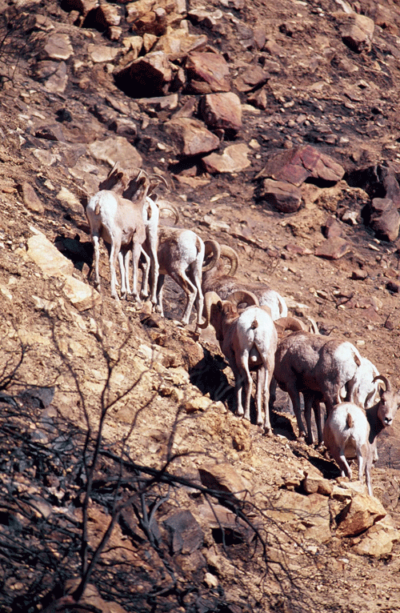EDITOR’S NOTE | By Bret Bradigan
The Ghosts of the Sespe
The backcountry might be experiencing a rebirth
The Sespe Creek wilderness looms large in the Ojai imagination. It is our backdoor bogeyman, where desperadoes like Joaquin Murrieta have hidden, and it was an unlikely location for a key moment in the Manson Family trial/circus.
 Generations of students from The Thacher School and others have ridden up and over the ridge above Ojai into the vast Sespe, lured by the call of the wild (and its fabled hot springs, as well). It’s Ojai’s first, and final, frontier.
Generations of students from The Thacher School and others have ridden up and over the ridge above Ojai into the vast Sespe, lured by the call of the wild (and its fabled hot springs, as well). It’s Ojai’s first, and final, frontier.
The Sespe descends from its headwaters at the confluence of Howard and Rock creeks to its confluence with the Santa Clara River near Fillmore, 27.5 miles of the river has been put under special protection.
As the Forest Service says in its official Wild & Scenic River designation in 1992, “Sespe Creek has exemplary visual features, including contrast created by large rock outcroppings and seasonal colors, and water that attracts regional and national attention. Below Chorro Grande Canyon, Sespe Creek offers excellent dispersed recreation opportunities, such as swimming and wading, picnicking, backpacking, hiking, horseback riding, bicycling, rock climbing, hunting, fishing, photography, driving for pleasure and viewing scenery on the adjacent scenic byway.
Yes all that, and more.
Our sister publication, the Ojai Quarterly, reported in 2011 on the re-discovery, after decades, of the “Ghost Herd of the Sespe,” the desert bighorn sheep who were re-introduced into the wilderness in 1985 and 1987 from the San Gabriel Mountains. The Sespe sheep had been gone for more than 100 years until those 37 sheep were helicoptered in. Soon, however, due to the extraordinarily rough terrain, the sheep apparently vanished again.
As Chuck Graham, the intrepid journalist, reported, “”That part of the Sespe hadn’t experienced a wildfire for close to 100 years. The chaparral was extremely overgrown, offering dense cover for predators but little or no escape terrain for the nimble-footed bighorn. Bighorn rely on their keen vision to locate predators, but after they were released, powerful windstorms scattered the transplanted herd and they were easy prey for mountain lions.
It was the Day Fire, in 2006, that changed things, for the better.
By burning off the thick brush, and allowing more edible plants to flourish, the bighorn sheep herd, once thought vanished, began to recover. It is another example of the necessity of fire in a healthy ecosystem. But the fires need to be frequent, and low-intensity.
Graham described his chance encounter, “Determined to reach the summit, I didn’t care how shredded my skin was getting. I wanted to find this lost herd of bighorn. Grateful for small gaps and openings in the chaparral, they didn’t last long in the loose shale and gritty sandstone. Much of the overgrowth was over 100 years old, was in some places 15 feet tall, and nothing was growing below its dense canopy. So when I stumbled into a bighorn ram it wasn’t clear who was startled more, the bighorn or me.
“I fell back into the brush, sweat stinging my eyes. The ram did what came naturally, busting through the brush creating its own escape route, its sinewy hindquarters churning upwards then vanishing beyond a steep arête. Fleeting yet thrilling, that brief encounter only fueled my quest to see more of these elusive bighorn in their historic habitat.
The Day Fire burned more than 163,000 acres, among California’s largest, and it overlapped somewhat with the largest fire, the 281,000-acre Thomas Fire. Add in the Zaca Fire’s 240,000 acres in 2007, and it becomes clear that we live in, and amid, a tinderbox.
Graham noted, “Currently, the estimated 18 to 29 desert bighorn sheep seen in and around the Sespe Hot Springs region are considered stable. However, no one knows for sure how many bighorn are out there … In the meantime, the bighorn enjoy good escape terrain and new growth to feed on.”
As I have witnessed in both the Sespe and Matilija Canyons, the once-clear and cold waters have slowed to a trickle, and the habitat appears severely stressed for the trout, pond turtles and arroyo toads who call it home.
The oldest of our myths revolve around rebirth from destruction, the necessary cycles of destruction and rebirth. But by burning down vast stretches of overgrown brush, and opening forage and escape routes for the sheep, the fires may not be all bad. Time will tell.

Leave A Comment